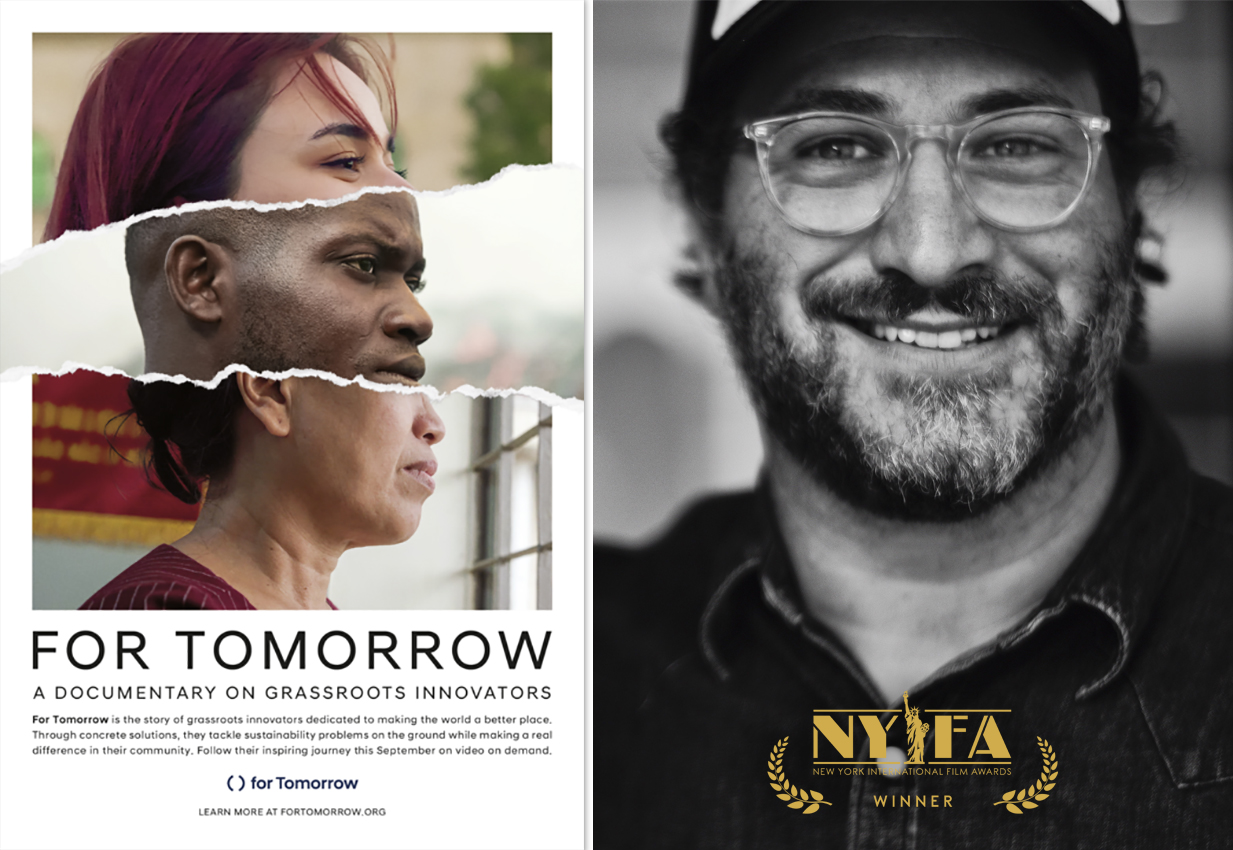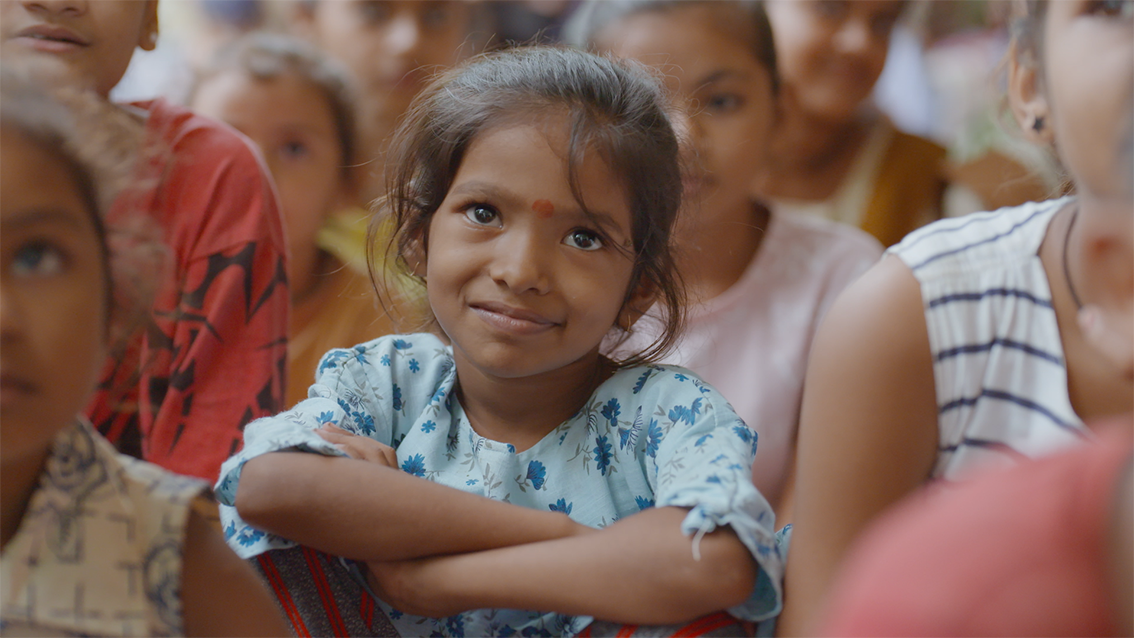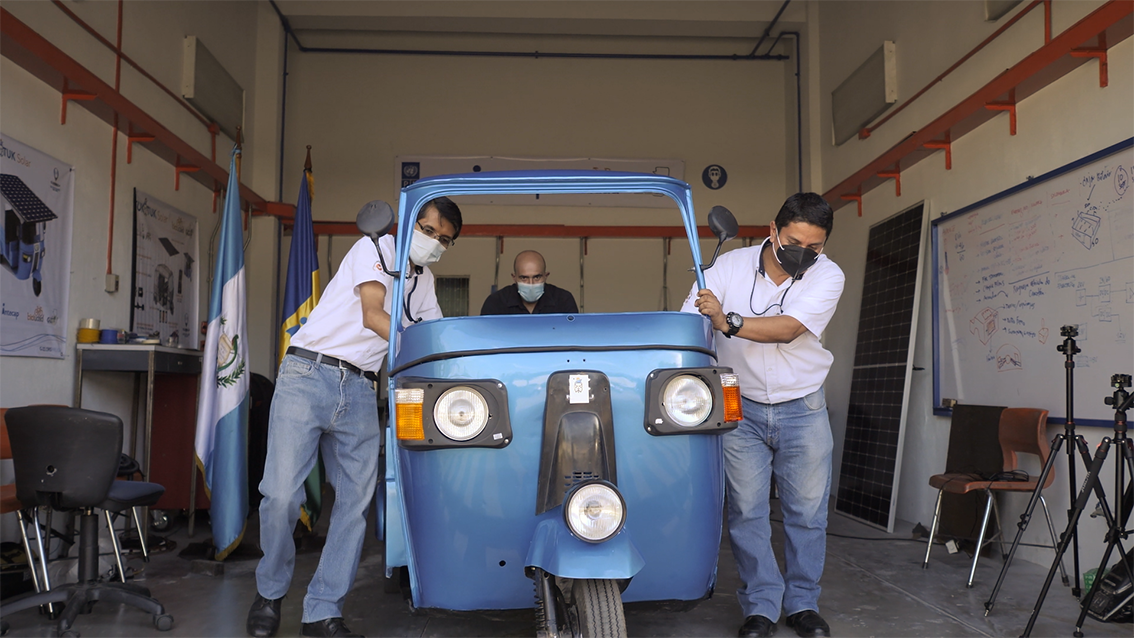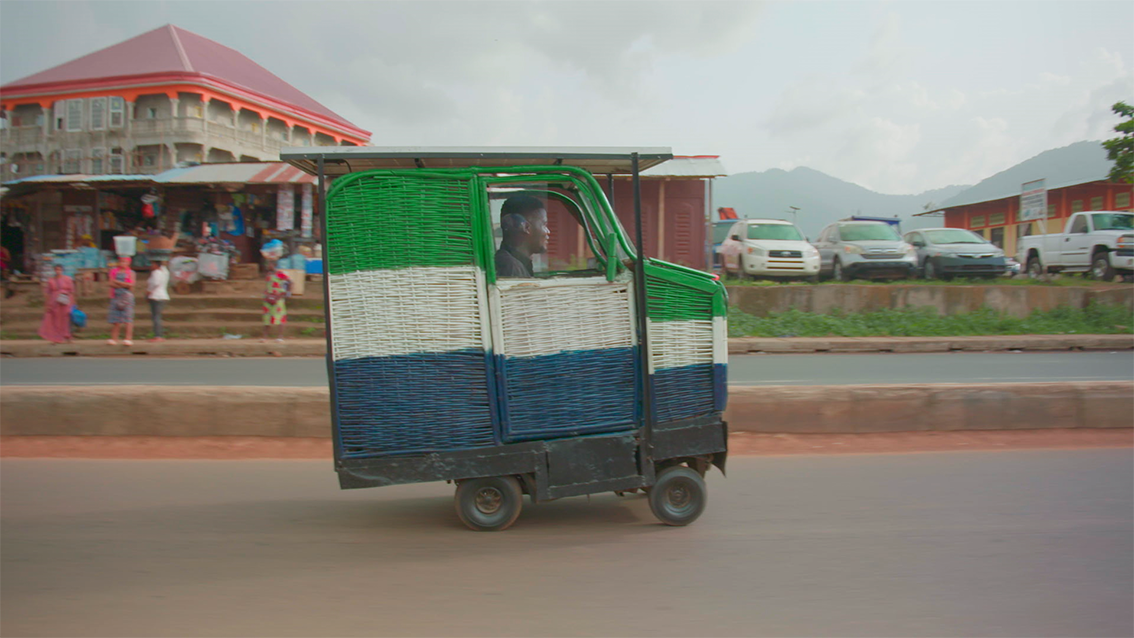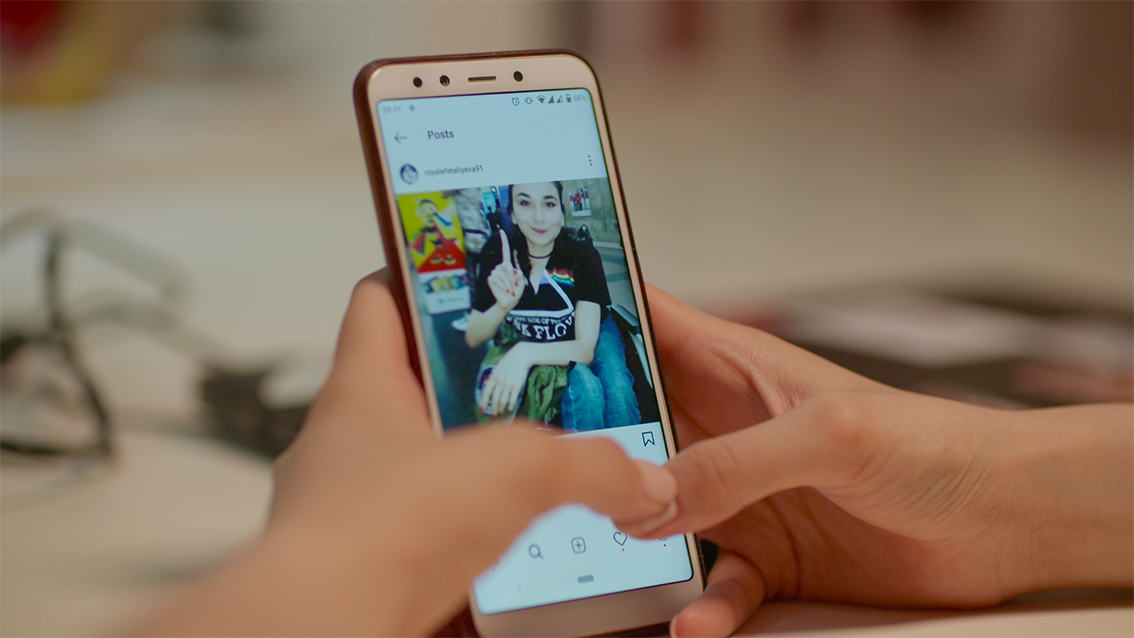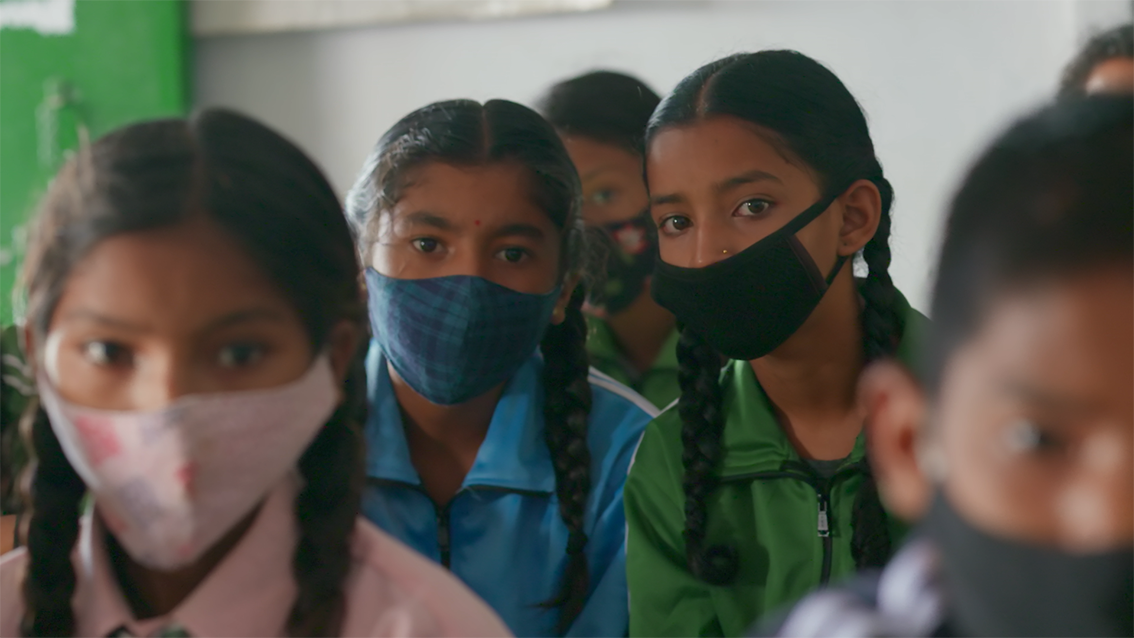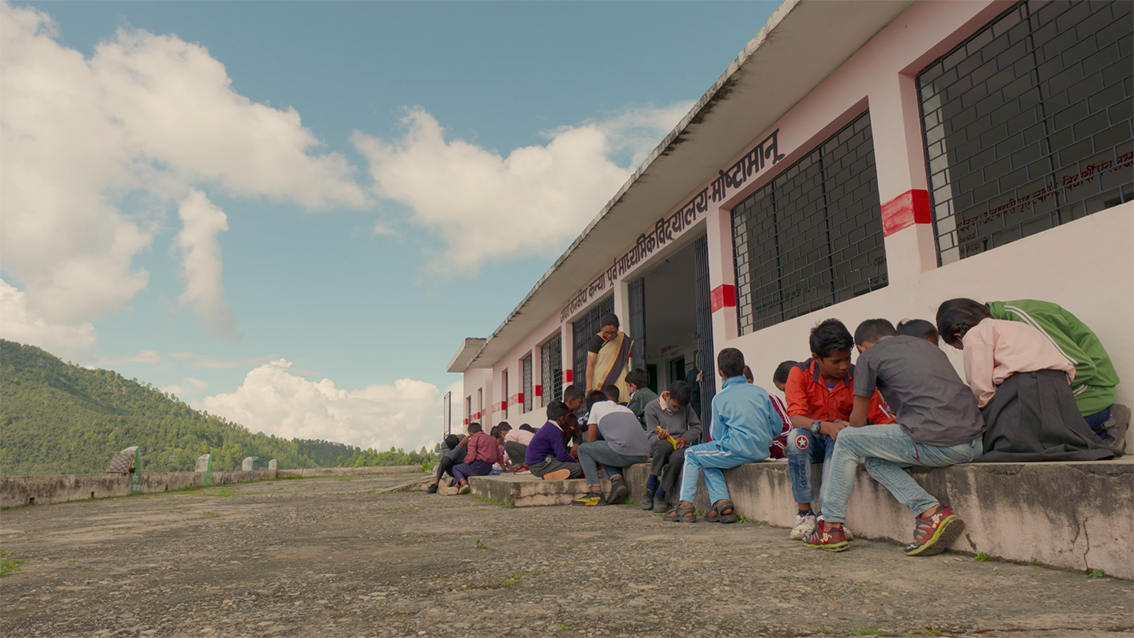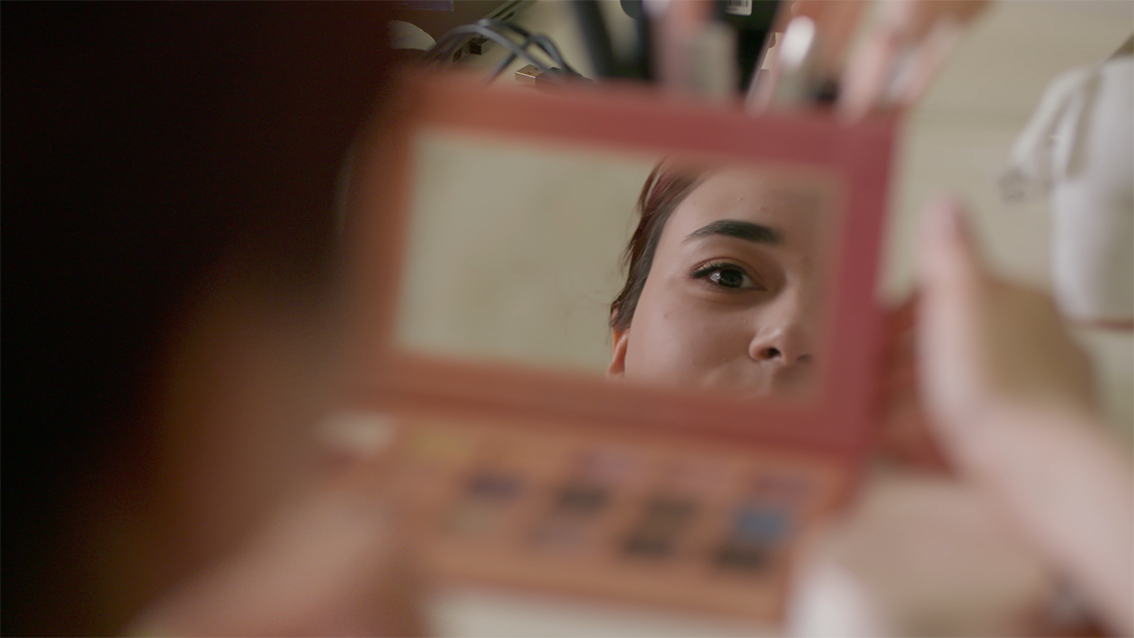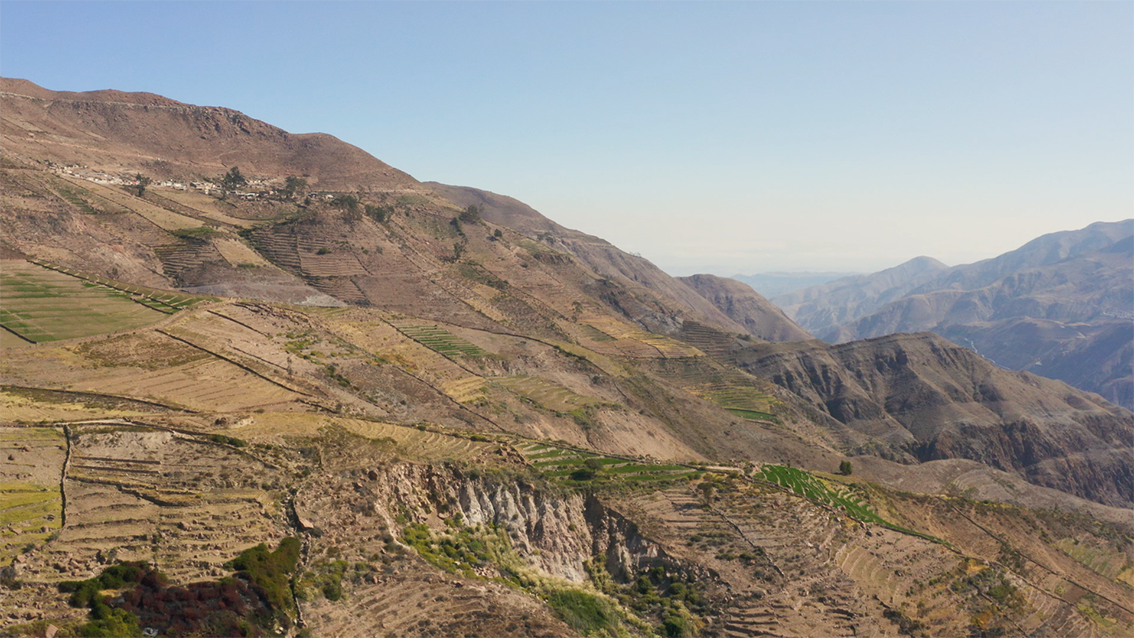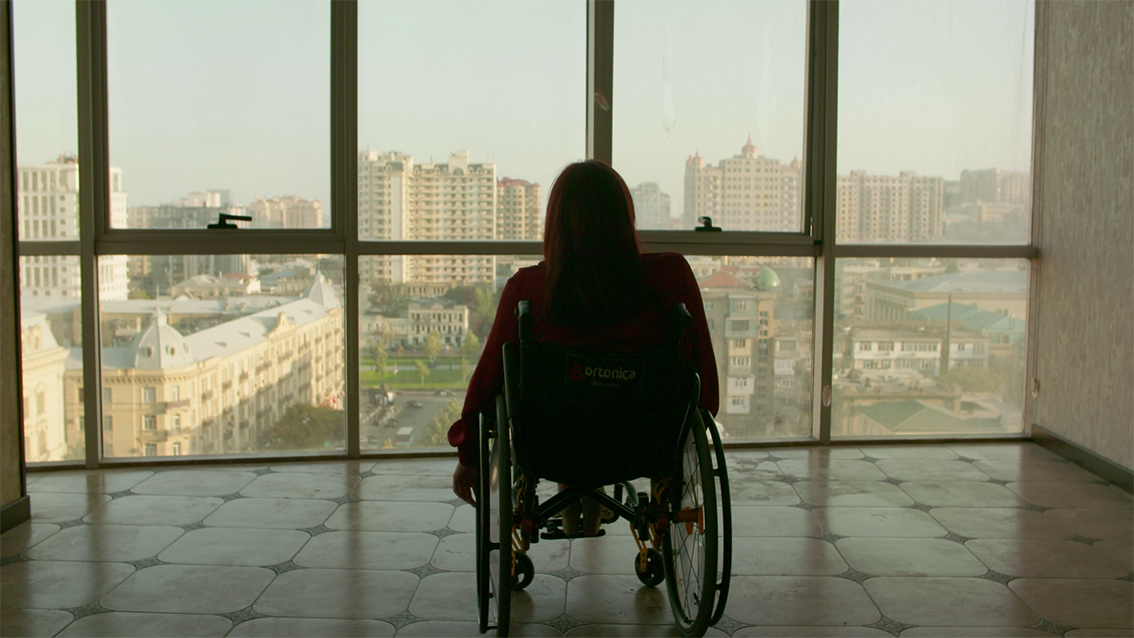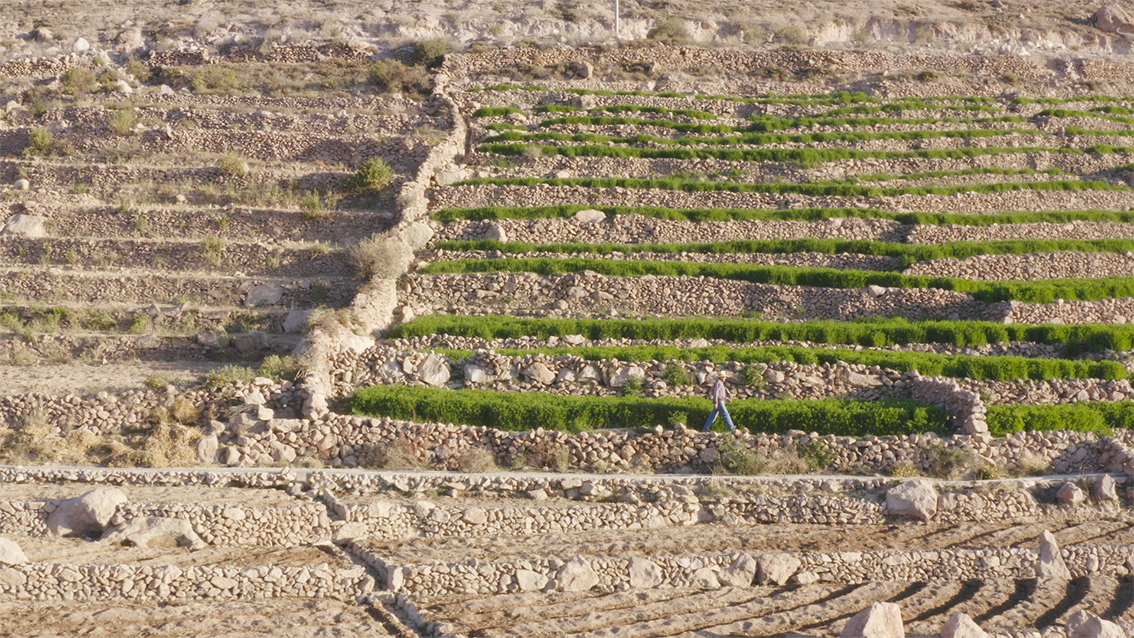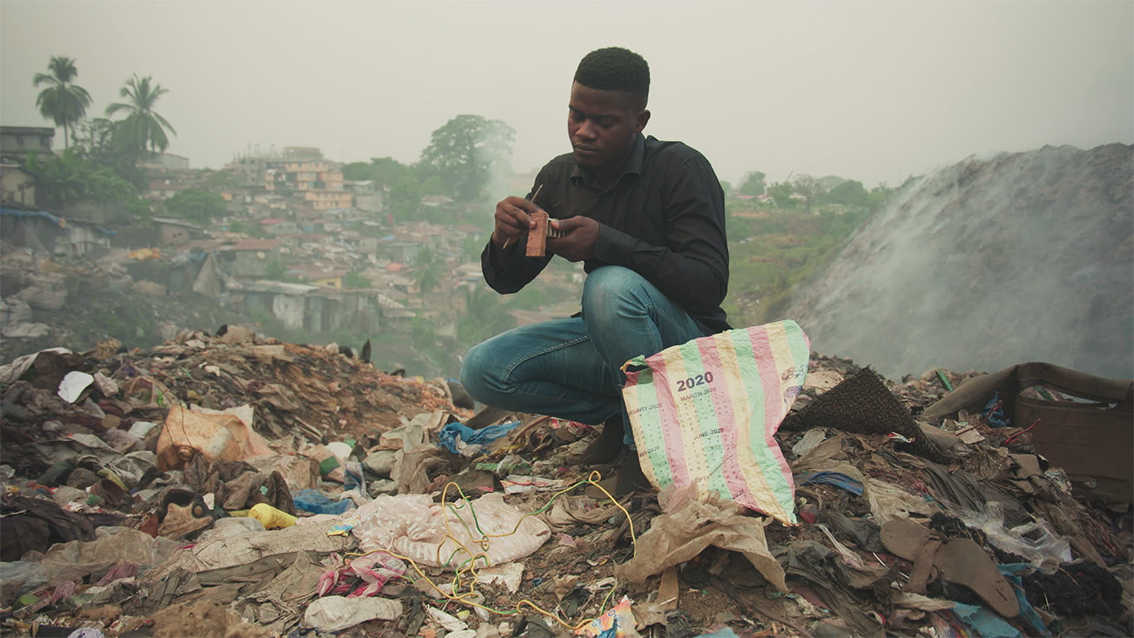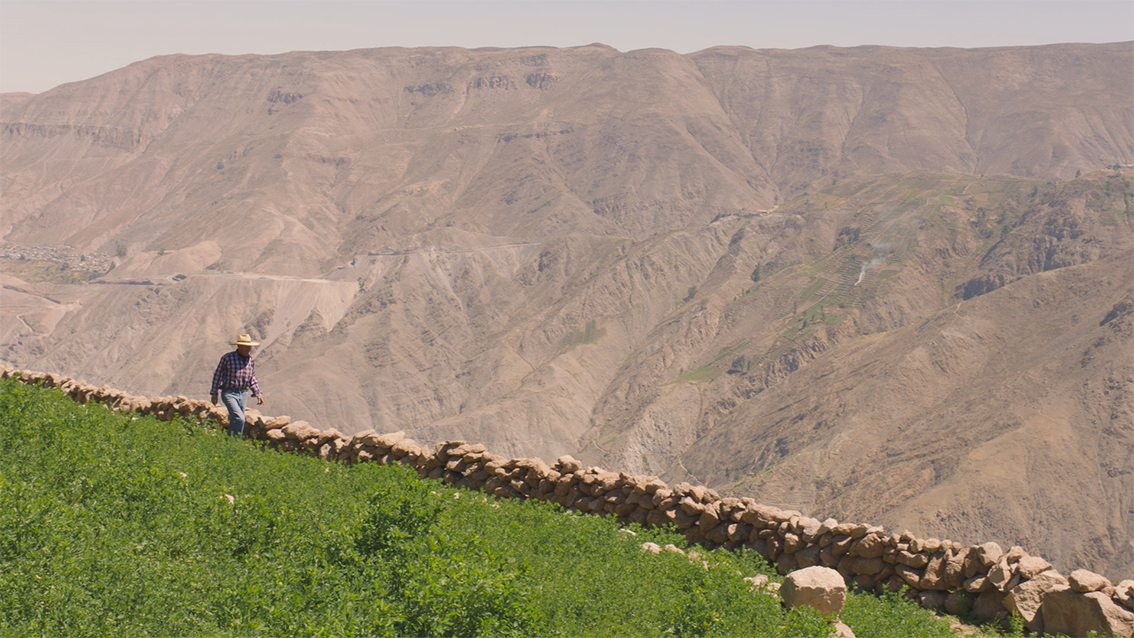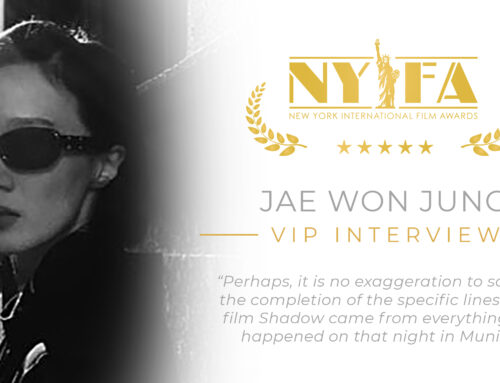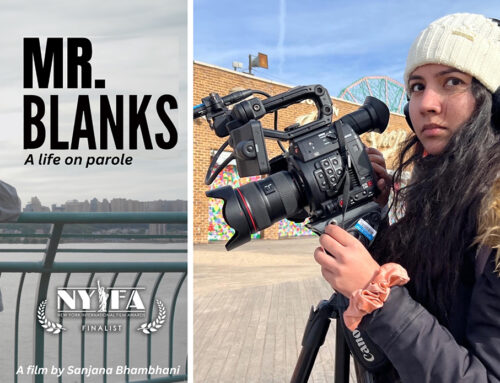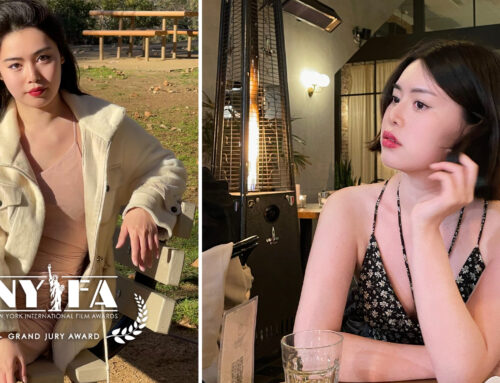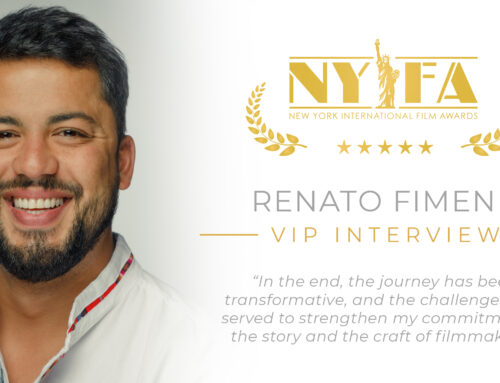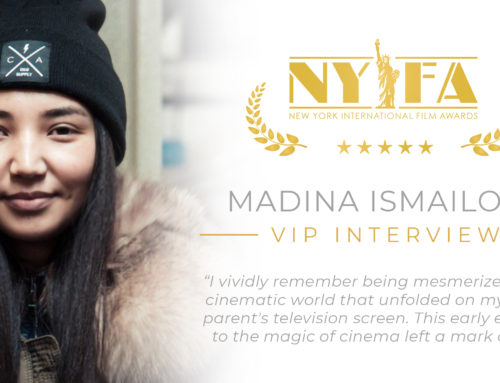VIP Interview with Elliot V. Kotek, producer of the Award Winning Documentary ‘for Tomorrow’
Today, we introduce Elliot V. Kotek, the producer of “for Tomorrow” a documentary that tell us the stories of groundbreaking innovators all around the world, dedicated to finding a solution to today’s most urgent sustainability issues. In this interview, we talk about what it meant for the crew involved to produce and film a documentary in several countries and different continent, and what a miracle it is to bring together these powerful and inspiring stories.
Hi Elliott, when did you first realize you wanted to become a producer?
I’m not sure I ever set out to be a producer – the role was really just a function of wanting to get things done, wanting to get going, and wanting to have an impact – so, when some of my early collaborators and I talked about making something, at some point we just had to stop talking and get going!
Can you tell us more about the team involved in the production of the documentary For Tomorrow?
The way the team came together for for Tomorrow was magically organic – and a super cool collaboration between us at The Nation of Artists and Montreal’s Sid Lee agency. What was unique was that the content was curated from the incredible innovators who’d shared their ideas on the fortomorrow.org platform, which was launched during the United Nations General Assembly in 2020. The platform, a first-of-its-kind collaboration between the United Nations Development Programme and Hyundai Motor Company, had so many incredible innovators on it, and our story producer, Lysandre Leduc-Boudreau, had the fun job of reaching out to communicate with these everyday heroes around the world.
After reaching out to her to maybe just direct the Vietnam part of the story, An Tran – though born in the U.S., came on board to direct the full feature from her surf-side apartment in Vietnam. My hands-on global producer Sue-Ellen Chitunya (a Zimbabwean who spent part of the filmmaking time in Dubai) rallied our crews and on-boarded everyone, and Sid Lee producer Sara Teasdale (in Toronto) handled the post-process and other key logistics. Looking back, it’s really incredible to think about how spread out we all were.
While our Nation of Artists teams handled all aspects of the production and filmmaking, Garcí Iñigo oversaw the Sid Lee positioning and resources, and together we positioned the film for its distribution down the road, too. JF Légare bounced back and forth with An on creative, and the editors, motion graphics people, composer, and others all really delivered. Because of the way the project started, with Hyundai’s generosity in inviting us to tell these stories of democratized innovation, we had a lot of great people involved along the path, from Fanny Eliaers and San Rahi to Cary Smith and Jennifer Kushner, and our consulting director of photography Svetlana Cvetko (Inside Job; OJ) whose work you should also look up!
The documentary was filmed all around the world from South America to Vietnam. How challenging has it been for you and your team to organize such an intense filming schedule?
Ohmigosh, An’s schedule, handling interviews with subjects in South America, Asia, Africa, and North America, meant there were some very sleepless periods; paying all our crews via wire transfers, Paypal, Venmo, Zelle, Western Union, check, in multiple currencies, required its own innovation; and getting the drives or uploads back to the team in Canada for post workflow also presented its own challenges. That said, being able to empower local teams to work with people in their communities to tell their stories, and thus become part of their network, was really a powerful place to work from, and matched the intention of the film so beautifully. The fact that the footage looks as good as it does, even though every location had its own separate equipment and operators, is still something I consider some sort of miracle.
You are drawn to produce innovative and impact-driven projects. What is the message you would like to convey with For Tomorrow in particular?
There’s a couple of beautiful messages in for Tomorrow that resonate with me: first, that “minds on the margin are not marginal minds. Great ideas can come from anywhere, not just the Silicon Valleys, “Silicon Alleys” and “Silicon Beaches.” So, we really need to be doing a better job, collectively, of listening to what people need, and supporting that experimentation locally rather than trying to solve things from afar. The extension of that, is that the people closest to the problems really do have key insights about behavior, traditions, local practices, infrastructure, workable hacks, etc., that need to be mapped, need to be observed and need to be respected. The more we can empower local stakeholders to work towards local solutions, the more they’ll become their own innovation hubs, and it’s that knowledge and those efforts that will lead to greater confidences and greater competencies.
The producer Elliot Kotek and the official poster of ‘for Tomorrow’ – www.fortomorrow.org/documentary
Do you have an anecdote about the filming you’d like to share with us?
I just really appreciate the range of people with whom we worked – and how the fortomorrow.org platform has managed to connect people with each other. Emmanuel Alie Mansaray, a self-taught engineer from Sierra Leone, had never traveled outside his country until our team organized for him to travel to Guinea to meet with other solar-powered transport innovators. His attendance at the premiere of the film at Lincoln Center in New York was his first ever flight, and his hotel room was on the 56th floor of a Manhattan hotel. His self-drive to be educated, to experiment, to innovate, came without formal support systems – and the world is now a lot more accessible to him as a result. That’s astonishing. That’s energizing. The only thing we need to innovate, is to have the will to innovate – we don’t only need to have traveled the path through a huge tech company, ascending ladders through academic institutions. That’s incredibly freeing.
Of course, Jamila Mammadli in Baku, Azerbaijan, being invited to a K-Pop café to talk about her work – increasing access to public transport systems for the physically challenged – is also something we could never have predicted. But when BTS becomes an ambassador for your documentary, the BTS Army becomes an unstoppable force for good, too!
Considering recent events, what do you think is the role of cinema in a world threatened by climate change?
Cinema’s role is an interesting one. The stories we tell have the ability to shift who we are and what we believe, and the movies we watch can catalyze communities to action. Just as films like Avatar and Black Panther are classic superhero stories, they’re also stories about overly extractive mining and the limited resources of our environment. We need our kids and our peers to feel inspired to address these worlds, to recognize when things can be done more synergistically with the world around us, and that we’ll all be better off, more secure, better fed, better fueled, more easily sustained, if the resources we wield, and the resources we yield, are distributed more evenly. It’s not political; it’s purposeful. We’ll need all kinds of storytelling, in all kinds of formats, to reach everyone who needs to be activated by that reality.
The documentary is so moving and touching on so many levels, but the part we found the most inspiring is when Charu Monga says, “If a problem comes you have to find a solution in your surroundings”. Do you think is possible for governments to finally open themselves up to finding solutions to limited infrastructures and climate change in the local knowledge of the smaller communities?
I think governments and local stakeholders need to be less siloed and more connected – more connected with the people they represent, who they can inspire to great things; and more connected with the companies who can provide expertise, technologies, logistics and other resources, to ensure good ideas can be trialed and scaled.
We’ve seen the direct impact of strategic alliances on for Tomorrow – having the United Nations Development Program, who work with individuals AND governments around the world, working alongside Hyundai Motor Company, a leading corporation involved in many different disciplines, has already led to greater awareness, fruitful discussions, deep connections, and very real outcomes.
How challenging is it to distribute a documentary nowadays?
Distribution is one of those interesting discussions – and traditional distribution isn’t necessarily the end goal. For us, we like to think about the behavior we’re trying to impact; we like to think about our best audience for our story, and assess where they might live, what they might watch. I think, oftentimes, if you’re looking to have an impact, you need to create a suite of different story assets so that you can reach your target audience in the many different places where they like to consume their media.
For us on this project, our goal remains one of inspiration – kindling that notion that YOU have some knowledge, some specific expertise that is useful – and by sharing it with others, you can impact the world around you – locally, regionally, nationally, globally. Because of that, we wanted this film to be as accessible as possible, which means global partners like Amazon Prime, and YouTube, and film festivals, and community screenings.
If you work backwards from who you’d like to reach to what kind of media you need to make, the question of what constitutes successful distribution definitely shifts.
What’s the best piece of advice that was ever given to you? And what’s the advice you would give to a young filmmaker?
Get to work. Just like our innovators, there’s nothing stopping a filmmaker from moving forward. There are so many people around us who want to be a part of telling a good story. You just have to get started. You need very little other than time to start researching, to start writing, to start finding out who in your community is interested in doing something similar, or is interested in helping you fulfil your vision, your passion.
And, at first, try not to be too attached to the outcome – remember, even when a film is voted by the industry as being the “best” of the year – worthy of trophies and honors – there will be people the next day who consider that work to be worthless, and hold something completely different in higher regard. That is out of your control. Do the work, put in the effort, do what you can, and just… keep… going 🙂
What’s next for you? What are you working on now?
Thanks. Yeah. We just launched a campaign for an incredible STEM education non-profit – FIRST Robotics – the campaign is at morethanrobots.org and is about the issues facing our kids, their sense of belonging, and how to build their esteem, it’s meaningful and gorgeous. We’re also working on a female-centric follow-up to our NBC Peacock Original Documentary Black Boys. The documentary is being directed by B. Monet and produced by Jon-Thomas Royston, Chad Williamson, and 3-time Olympic Gold Medalist Tina Charles. And I’m also working on a project with Preservation Hall in New Orleans – about the transfer of culture from one generation to the next, and the footage of these incredible jazz musicians coming back from Covid to play together again, and then celebrate the Hall’s 60th anniversary is truly special.
Follow Elliot Kotek and his projects on:

